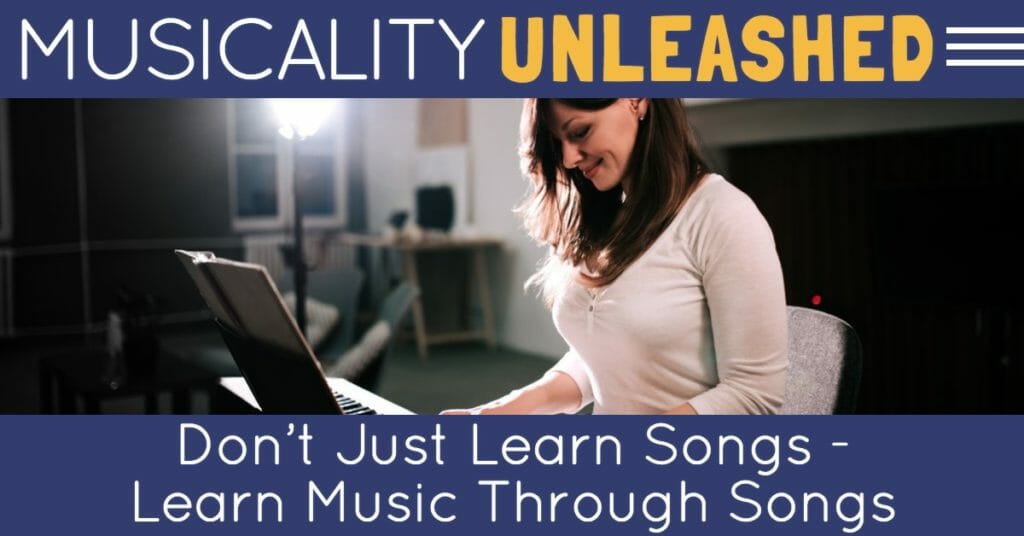This episode is part of the Musicality Unleashed series. Learn more and get a bonus “cheat sheet” at musicalityunleashed.com. In this episode, we talk about how you can connect the music theory and ear training you’re learning with the music you want to play and are passionate about.
Listen to the episode:
Subscribe For Future Episodes!
Enjoying the show? Please consider rating and reviewing it!
Links and Resources
Enjoying Musicality Now? Please support the show by rating and reviewing it!
Transcript
Learning music means learning to play songs or pieces – right?
Actually, if you approach music that way you’re drastically limiting your musical potential.
Yet songs *can* hold the key to the most enjoyable and effective kind of music learning there is… How can that be?
Music education normally focuses purely on learning to reproduce songs on your instrument.
That can be satisfying at first but it quickly makes you start feeling like a robot rather than a real musician – painstakingly learning new pieces note-by-note and always worried about playing a wrong note.
At the other end of the spectrum you could focus purely on your “inner musician”, training your ears and brain to understand music on a deep level.
That’s really valuable and often it’s really helpful to rebalance things by including more of that kind of work in your music learning.
The problem is that kind of music theory and ear training is often taught with dry, abstract studies and exercises. You develop the understanding but it’s completely separate to the songs you’ve been learning to play and the real music you’re passionate about.
It can feel like you’re bending over backwards to connect the two worlds: of understanding musical concepts intellectually, and playing “real music”.
So how can you have the best of both worlds?
Learning with songs and real music, and gaining that deep intellectual and instinctive understanding of how music works?
It turns out you can do this, using an approach called “song-based learning”.
With this kind of approach you learn real musical pieces, like songs – but you don’t learn them for the sake of just replicating them note-perfectly.
Every song is carefully selected because it features the new musical concepts you want to understand next.
The music itself is used to teach the concepts so that you actually get to understand what’s going on instinctively even before you’re explicitly introduced to the concepts underneath.
When you do it this way, music theory and ear training aren’t separate activities from learning pieces of music – they all go together, and the whole process of learning music becomes more effective, more efficient, more enjoyable, and – most importantly – more musical!
So any time you’re trying to understand a new musical concept or learn a new musical skill, ask yourself: could I do this through a song? And any time you’re learning to play something new, take a moment to ask: what could this song teach me about music, what can I learn here that will empower me in the rest of my musical life?
Do this and you’ll start to experience the power of song-based learning – and you’ll soon wonder how and why you ever did it any other way!
This kind of song-based learning is the ideal environment for exploring the kind of new mental models we’ve been talking about in this Musicality Unleashed series.
Subscribe For Future Episodes!
Enjoying the show? Please consider rating and reviewing it!







